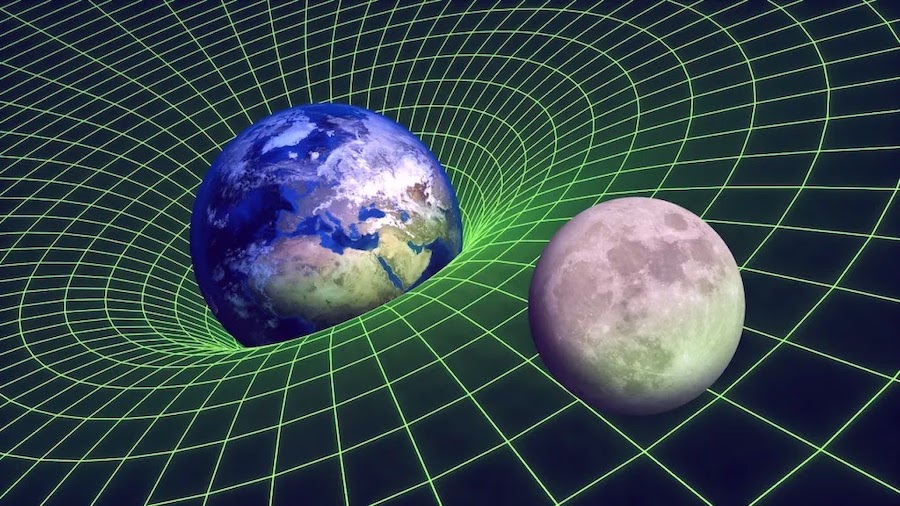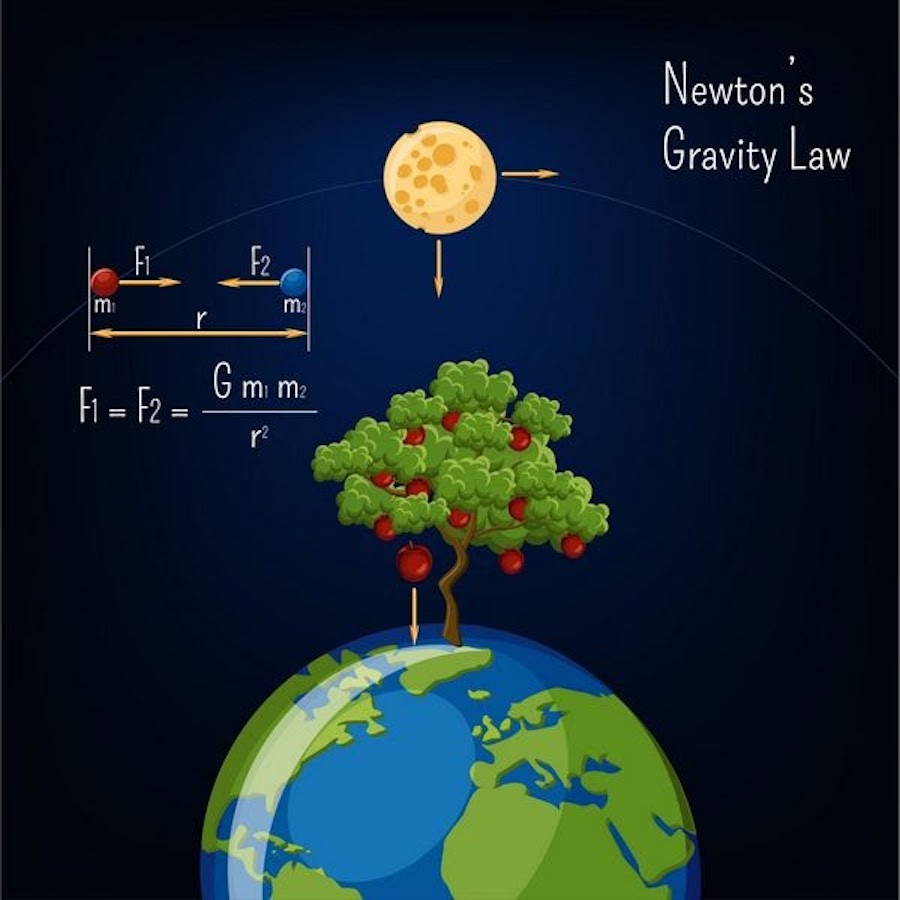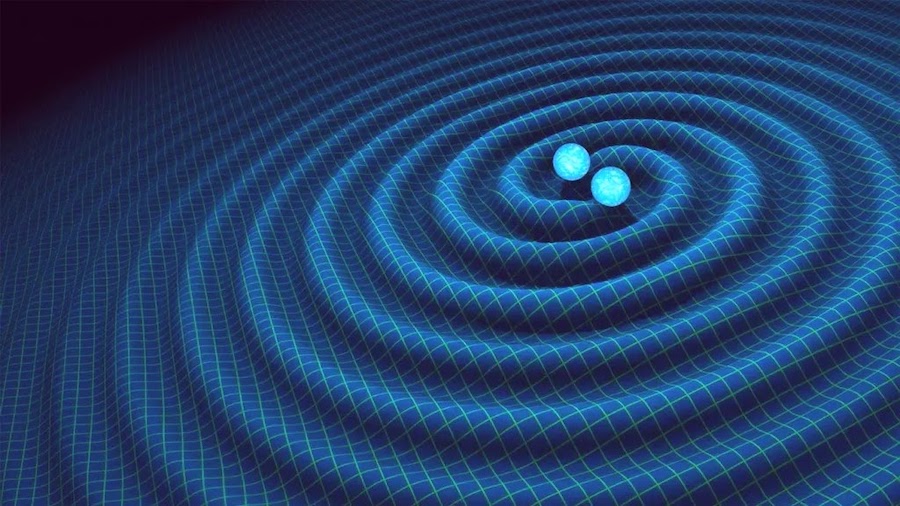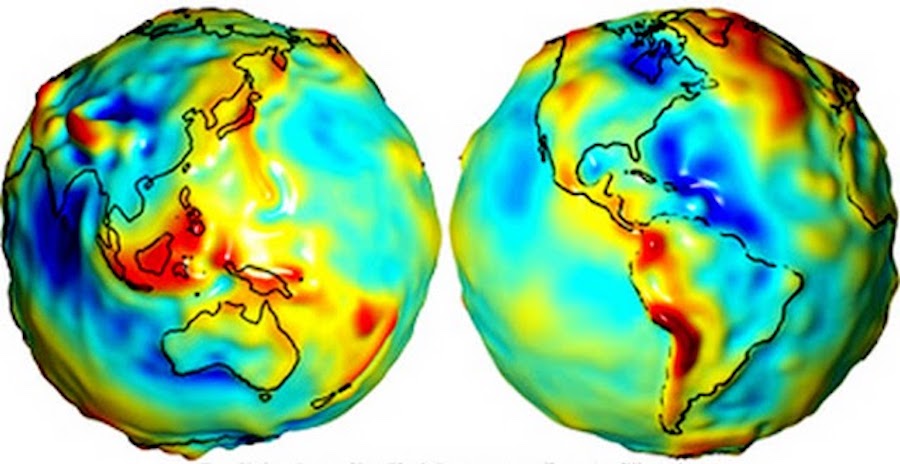Gravity (from Latin gravis, “heavy”) is the force that attracts two bodies towards each other. Everything that has matter, that is, everything that can be touched, also has a gravitational attraction. gravity is one of the four fundamental forces in the Universe, along with electromagnetism and the strong and weak nuclear forces. While it may be the least powerful force, it is also the most conspicuous. Because of the gravitational force, people can walk on the Earth and planets can orbit around the Sun.
The degree of gravity of any object is proportional to its mass. Thus, objects with greater mass have greater gravity. Since the Earth is the largest and closest object around, all objects and objects are attracted to it. For example, apples fall to the ground, and are not attracted, for example, to a person’s head.

Distance also affects gravity. The further away the object, the weaker the gravitational attraction.
Ancient scientists trying to describe the world came up with their own explanations for why things fall to the ground. The ancient Greek philosopher Aristotle argued that objects have a natural tendency to move towards the center of the universe, which he believed was in the middle of the Earth.
However, the Pole Nicolaus Copernicus realized in the 16th century that the trajectories of the planets in the sky are determined by the position of the Sun, which is the center of the solar system. A century later, British mathematician and physicist Isaac Newton expanded on Copernicus’s ideas and concluded that because the Sun attracts the planets, all objects are attracted to each other.
Today, the current theory that describes gravity is Einstein’s general theory of relativity.
Newton’s classical theory of gravity
English physicist Isaac Newton said that the idea of universal gravitation came to his mind while walking. He walked through the apple orchard on his parents’ estate and suddenly saw the Moon in the daytime sky, and then an apple came off a branch and fell to the ground. Newton by that time was already working on the laws of motion and understood that the apple fell under the influence of the Earth’s gravitational field. He also knew that the Moon does not occupy a static position in the sky, but rotates in orbit around the Earth, that is, it is affected by some kind of force that prevents the satellite from flying into space. The physicist realized that perhaps the same force acts on the apple and the moon.
Newton’s predecessors thought differently. Italian physicist Galileo Galilei believed that natural gravity operates on Earth. The German astronomer Johannes Kepler believed that completely different laws of motion operate in the celestial spheres than on Earth. Newton combined these two types of gravity in his mind.
Newton’s law of universal gravitation, formulated by him in 1687, states that between any pair of bodies in the Universe there is a force of mutual attraction. It is expressed by a mathematical equation: if M and m are the masses of two bodies, and r is the distance between them, then the force F of mutual gravitational attraction between them is equal to F = GMm/r², where G is the gravitational constant, equal to the force with which they act on each other each other bodies with masses of 1 kg, being at a distance of 1 meter from each other. The equation states that force (F) is proportional to the masses of two objects divided by the square of the distance between them. It follows that the more massive the objects, the greater the force of attraction between them, but the further they are from each other, the weaker the attraction.

The law applies to all physical material bodies in the Universe without exception. The force of gravity of the Earth at its surface equally affects all material bodies located anywhere on the globe. Each person is affected by the force of gravity, which is felt as weight.
Newton’s law of universal gravitation says that not only does the Earth attract the apple, but the apple also attracts the Earth. But the Earth’s enormous mass means that it takes much more force to move it any appreciable amount, so the apple falls while the Earth remains essentially motionless. The same is true in a broader context. Every object in the Universe attracts every other object, and the closer and more massive it is, the greater its gravitational force.
According to Newton, the force of gravity acts at any distance and instantly. However, the highest speed in the world is the speed of light, and to cover large distances, light needs not an instant, but several seconds and sometimes even years.
Einstein’s theory of gravity
In 1798, British physicist Henry Cavendish conducted one of the world’s first high-precision experiments to try to accurately determine the value of G, the gravitational constant. He built what he called a torsion balance by attaching two small lead balls to the ends of a beam suspended horizontally by a thin wire. Next to each of the balls, the physicist placed a large spherical lead weight. The small lead balls were gravitationally attracted to the heavy lead weights, causing the wire to twist slightly. This phenomenon allowed him to calculate the value of G.
It is noteworthy that Cavendish’s estimate for G differed by only 1% from the currently accepted value of 6.674 × 10^-11 m^3/kg^1 * s^2. To get an accurate reading, scientists must develop incredibly sensitive equipment.
German-American physicist Albert Einstein ushered in the next paradigm shift in our comprehension of gravity. His groundbreaking general theory of relativity unveiled the concept that gravity emerges from the bending of spacetime, illustrating that even beams of light, which ought to travel in a straight path, are bent when passing near immensely massive objects. Within the framework of his theory, gravity is not conceived as a force acting upon objects, but rather as the warping of the fabric of space and time influenced by the presence of mass and energy.
Einstein’s theories have been used to suggest the existence of black holes, celestial objects with such a large mass that not even light can escape from beneath their surface. Near a black hole, Newton’s law of universal gravitation can no longer accurately describe how objects move.
The theory, which Einstein published in 1915, expanded on his special theory of relativity, which he had developed a decade earlier. Special relativity stated that space and time are inextricably linked, but this theory did not recognize the existence of gravity.
In his special theory of relativity, Einstein determined that the laws of physics are the same for all observers not moving with acceleration, and showed that the speed of light in a vacuum is the same regardless of the speed at which the observer is moving. As a result, he discovered that space and time are intertwined, and events that occur at the same time for one observer may occur at different times for another.
While developing the equations of his general theory of relativity, Einstein realized that massive objects cause space-time to distort. Imagine you are placing a large object in the center of a trampoline. The object was pressed into the tissue, causing dimples to appear. If you then try to roll the ball along the edge of the trampoline, it will spiral inwards towards that object.
The rotation of a heavy object such as the Earth should twist and distort the spacetime around it. In 2004, NASA launched Gravity Probe B. According to the agency, the axes of the satellite’s precisely calibrated gyroscopes drifted very slightly over time, consistent with Einstein’s theory.
Einstein predicted that events such as the collision of two black holes create ripples in space-time known as gravitational waves. And in 2016, the Laser Interferometer Gravitational-Wave Observatory (LIGO) announced that it had identified such a signal for the first time. The gravitational wave was caused by the collision of two black holes with masses 29 and 36 times the mass of the Sun. After that, they merged into one large black hole. This happened presumably 1.3 billion years ago.

Since then, LIGO and its European counterpart Virgo have detected a total of 50 gravitational wave events.
How gravity works and why it’s important for kids
Gravity is a natural force that makes things with mass (like planets, stars, and even you!) attract or pull each other. It’s what keeps us and everything else on Earth from floating away into space. Understanding gravity is important for kids because it helps explain many everyday phenomena and even the way our universe works.
How Gravity Works
Imagine you have a ball, and you drop it from your hand. What happens? It falls to the ground, right? That’s gravity at work. Everything with mass has gravity, and the bigger something is, the stronger its gravity.
In space, where there’s no air resistance, things keep moving unless a force, like gravity, pulls or pushes them. Gravity from Earth attracts all objects toward its core. That’s why things fall when you drop them. The same thing happens with the Moon, which has its own gravity, which is weaker than Earth’s, but still strong enough to make the Moon’s surface pull objects towards it.
Why Gravity is Important for Kids
- Keeps You on the Ground: Without gravity, you’d float away into space, which would be pretty scary and make it impossible to live on Earth.
- Helps You Walk and Jump: Gravity helps you stay grounded, so you can walk, run, and jump. It’s the reason your feet stay on the ground when you walk, giving you stability.
- Holds the Atmosphere: Gravity holds Earth’s atmosphere in place. That means you have air to breathe, and it’s why you can feel wind and weather.
- Keeps the Planets in Orbit: Gravity is what keeps planets like Earth in orbit around the Sun. Without it, they would wander off into space, and there would be no stable orbits.
- Astronomy and Space Exploration: Understanding gravity is crucial for space exploration. It helps scientists plan missions to other planets, launch satellites, and study the universe.
- Fun Experiments: Learning about gravity can be fun! You can do experiments with falling objects, make paper airplanes, and even learn about the force of gravity on different planets and moons.
So, gravity is an essential force that affects everything around us, and it’s a big part of how our world works. It’s not just something you learn about in school; it’s something you experience every day when you walk, jump, or drop something on the ground.
What is the force of gravity?
The Earth’s gravitational field is the field of gravity that is formed due to the Earth’s gravitational force and the centrifugal force caused by its daily rotation.
Gravity on the Earth’s surface varies from 9.780 m/s² at the equator to 9.832 m/s² at the poles. In approximate calculations, the value is usually taken to be 9.81; 9.8 or 10 m/s². However, it only takes into account the force of gravity and does not take into account the centrifugal force resulting from the rotation of the Earth. As the body rises above the Earth’s surface, the value decreases.

French scientists claim that the difference in the gravitational constant in different regions of our planet depends on the strength of the Earth’s magnetic field. They suggested that such an influence could be explained by the presence of additional and hidden dimensions of space for direct observation. Scientists have calculated that gravity will be stronger in places where the magnetic field is stronger. Thus, it reaches its maximum values in the areas of the north and south magnetic poles. They do not coincide with the geographical poles. Thus, the north magnetic pole is located within the boundaries of the current Canadian Arctic, and the south lies on the edge of Antarctica.
If we take the value of gravity on Earth as one, then on the Sun it will be 27.9, on Mercury – 0.37, on Venus – 0.9, on the Moon – 0.16, on Mars – 0.37, on Jupiter – 2.6. Thus, if a person who weighs 60 kg on Earth weighs himself on Jupiter, the scales will show 142 kg.
Astronauts in orbit also experience microgravity. They seem to fall endlessly along with the ship they are in.
conclusion
In conclusion, understanding how gravity works and recognizing its importance is fundamental for kids and everyone alike. Gravity is the invisible force that keeps us firmly planted on Earth, allows us to move, and shapes our world in countless ways. It’s what keeps our planet in orbit around the Sun, gives us an atmosphere to breathe, and makes life as we know it possible.
FAQs
1. What is gravity?
- Gravity is a natural force that causes objects with mass to be attracted to each other. It’s what keeps everything on Earth, including us, firmly on the ground.
2. How does gravity work?
- Gravity works by pulling objects with mass toward each other. The greater an object’s mass, the more powerful its gravitational attraction.
3. Who discovered gravity?
- Sir Isaac Newton is credited with formulating the laws of universal gravitation in the late 17th century. These laws describe how gravity operates.
4. Why is gravity important on Earth?
- Gravity is crucial for various reasons. It keeps our atmosphere in place, allows us to walk and jump, and keeps celestial bodies like the Moon in orbit around Earth.
5. What is gravity, and why is it important to humans?
- Gravity is a natural force that pulls objects with mass toward each other. It’s important to humans because it keeps us grounded on Earth and enables many aspects of our daily lives.
6. How does gravity affect our bodies?
- Gravity affects our bodies by providing resistance to our movements. It helps us maintain muscle and bone strength and plays a role in our posture and balance.
7. How does gravity influence our daily activities?
- Gravity affects everyday activities like walking, running, and lifting objects. It determines our weight, which influences the design of structures, vehicles, and equipment.
8. Does gravity affect our health?
- Yes, gravity plays a vital role in our health. It helps circulate blood in our bodies, maintains bone density, and influences our body’s internal rhythms, like sleep patterns.


